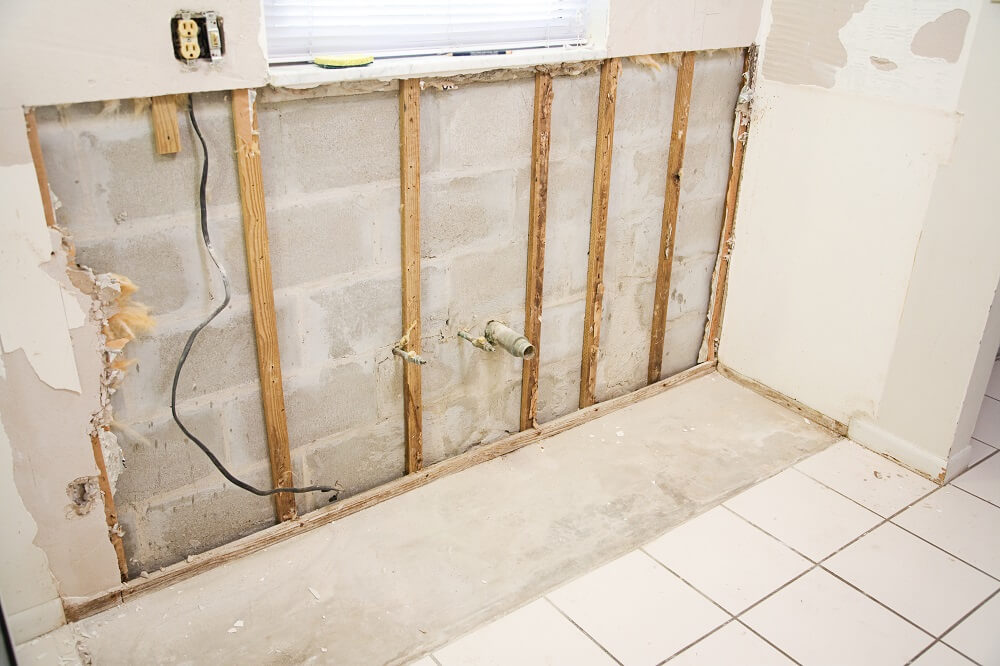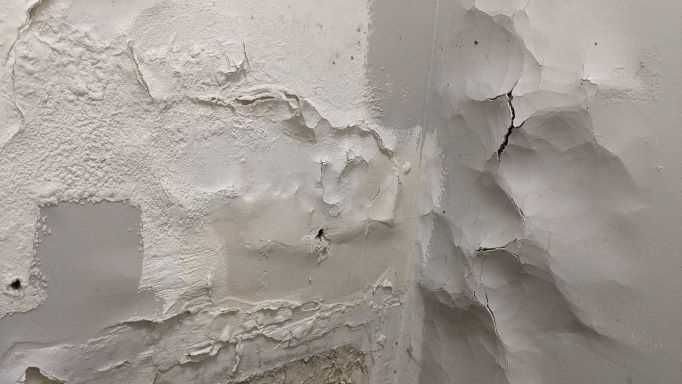Top Water Mitigation Company for Fast Response and Quality Service
Top Water Mitigation Company for Fast Response and Quality Service
Blog Article
The Refine of Water Damages Cleanup: Ensuring Your Home Is Brought Back Successfully
Water damages can be a complicated obstacle for property owners, demanding a thorough and organized cleanup process to recover security and capability. Originally, a thorough assessment is vital to identify the level of the damage and establish the suitable remediation measures. Following this, effective water extraction techniques play a pivotal role in minimizing additional injury. The subtleties of drying out, sanitizing, and eventual repair are equally crucial and often ignored. Understanding these stages can make a significant difference in the outcome of your home's restoration, motivating a closer take a look at what each step entails.
Assessing the Damage
Upon uncovering water damage, the very first step is to extensively assess the extent of the influence. This first examination is important, as it helps identify the required steps for effective cleaning and repair. Begin by evaluating the impacted locations, consisting of walls, ceilings, floors, and personal valuables, to determine the source of the water invasion, whether from flooding, leakages, or condensation.
Recording the damages is essential for both insurance coverage cases and planning remediation initiatives - damage restoration services. Use photos and written notes to catch the severity of the damages, keeping in mind any type of afflicted architectural components and materials. Pay special interest to areas that may not be immediately noticeable, such as behind walls and under carpets, as concealed dampness can result in additional complications, including mold development
Additionally, evaluate the timeline of the water exposure. The longer the materials remain wet, the higher the possibility for damages. Understanding the duration of exposure will inform the necessity of remediation initiatives. Ultimately, an extensive evaluation lays the groundwork for a successful water damage clean-up procedure, guaranteeing that all affected locations are addressed effectively and completely.
Water Extraction Methods

Specialists generally utilize submersible pumps for larger volumes of water, which can rapidly ease flooding in cellars or other affected areas. For smaller amounts, wet/dry vacuums are typically made use of to draw out recurring moisture from carpets and difficult surface areas. Additionally, using mobile extractors enables targeted elimination in restricted areas or areas with delicate products.
In circumstances of infected water, such as sewage or floodwater, progressed removal strategies may include using biohazard devices to guarantee security and conformity with health guidelines. High-powered extraction tools are vital in decreasing water retention in architectural products, which can bring about mold and mildew development and structural wear and tear if not dealt with promptly.
Inevitably, the efficiency of water extraction strategies plays a pivotal duty in the overall success of the water damage clean-up process, laying the groundwork for subsequent remediation initiatives.
Drying and Dehumidification
Once standing water has actually been successfully drawn out, the next important stage in the water damage cleanup procedure is drying out and dehumidification. This action is vital to protect against more damage and mold and mildew development, which can occur within 24 to two days in damp atmospheres.
To attain reliable drying, specific devices such as industrial-grade air movers and dehumidifiers is employed. Air movers flow air across wet surfaces, enhancing evaporation prices, while dehumidifiers decrease humidity degrees in the air, advertising a conducive setting for drying. The combination of these devices makes sure that wetness is attracted out from home furnishings, floorings, and walls, enabling them to completely dry extensively.
It is very important to monitor the drying out procedure very closely. Professionals frequently utilize wetness meters to analyze the wetness material in different materials, making certain that all influenced locations get to acceptable dry skin degrees. This precise method aids to stop surprise dampness pockets that could lead to structural damage or unhealthy mold development.

Cleaning and Sterilizing
After the drying out and dehumidification stage is full, the next important action in water damages clean-up is cleansing and sterilizing the affected locations. This process is important to protect against dig this the development of mold, germs, and other microorganisms that thrive in damp settings.
The cleaning phase normally includes removing any type of debris, dust, and pollutants from surfaces making use of specialized cleansing agents. For hard surfaces, a combination of soap and water or industrial cleaning products is frequently used. Soft materials, such as furniture and rugs, may need a lot more comprehensive cleansing methods, consisting of vapor cleansing or deep removal methods, to make certain extensive sanitation.

Sanitizing complies with cleaning, making use of EPA-approved disinfectants to get rid of damaging microorganisms. This step is crucial, particularly in locations that might have entered into call with floodwaters or sewage, as these resources can position serious health and wellness threats.
Additionally, it is essential to resolve any kind of continuing to be smells, which may require using odor neutralizers or sophisticated techniques like ozone therapy. Correct cleansing and sanitizing not just recover the safety and security and hygiene of your home but also lay the foundation for successful restoration and fixings in subsequent stages of the water damages cleaning process.
Remediation and Repair Services

When the analysis is complete, repair initiatives can begin. In addition, floor covering might call for similar interest, depending on the level of water exposure.
It is essential to involve experienced remediation specialists during this procedure, as they have the knowledge to take care of intricate fixings properly. In addition, they can assist minimize potential future problems, such as mold growth or structural instability, therefore making certain a safe and habitable living setting. Inevitably, reliable remediation and repairs bring back the home's stability and boost its general worth.
Conclusion
In verdict, the procedure of water damage clean-up is crucial for recovering a home to its pre-damage condition. Each phase, from analyzing the damage to applying effective water removal techniques, followed by complete drying, sanitizing, and necessary repair work, this content plays an important role in making certain safety and security and conformity with structure criteria. Reliable implementation Visit Your URL of these actions not just minimizes prompt damages but likewise improves the long-lasting honesty and worth of the residential property.
Water damages can be a complicated challenge for house owners, demanding a organized and thorough clean-up process to bring back security and functionality. Inevitably, a comprehensive analysis lays the groundwork for a successful water damage cleaning procedure, guaranteeing that all impacted areas are dealt with efficiently and thoroughly.
Efficient water extraction strategies are necessary in reducing damages and protecting against more issues following a water invasion occasion.In final thought, the process of water damages cleanup is critical for restoring a home to its pre-damage problem. Each phase, from examining the damages to executing reliable water extraction strategies, adhered to by detailed drying out, sterilizing, and necessary repair services, plays a necessary role in ensuring safety and compliance with structure criteria.
Report this page